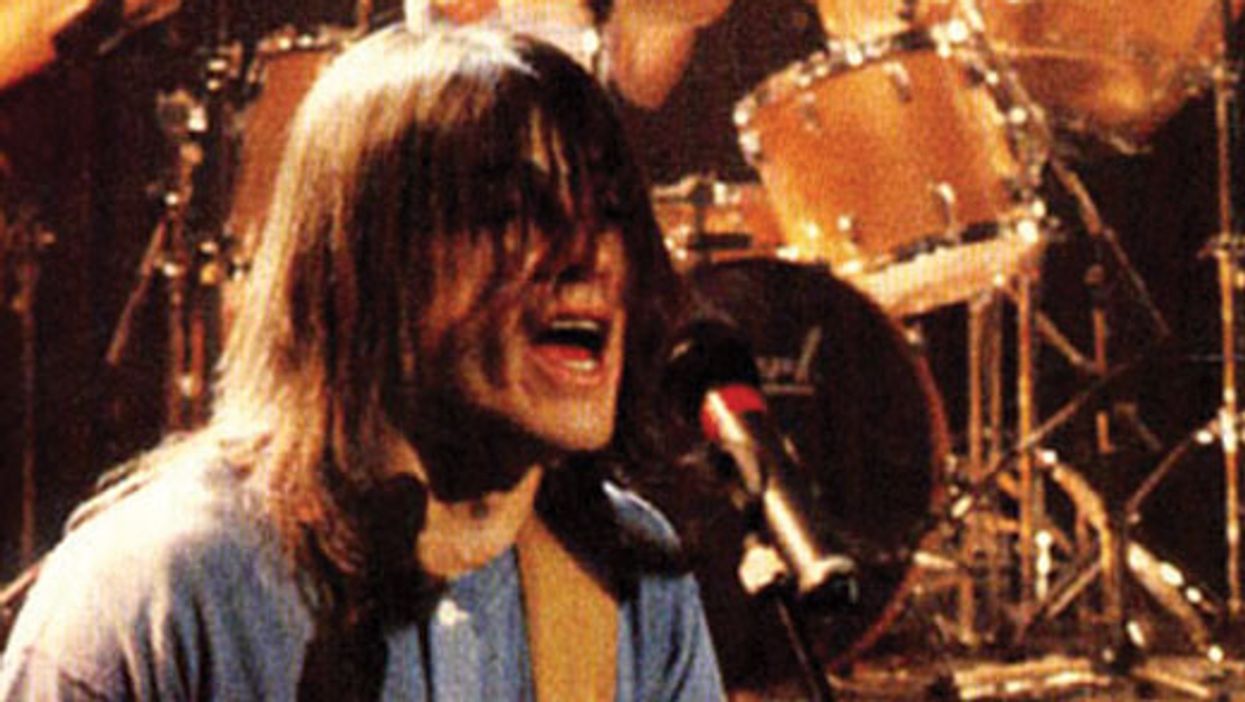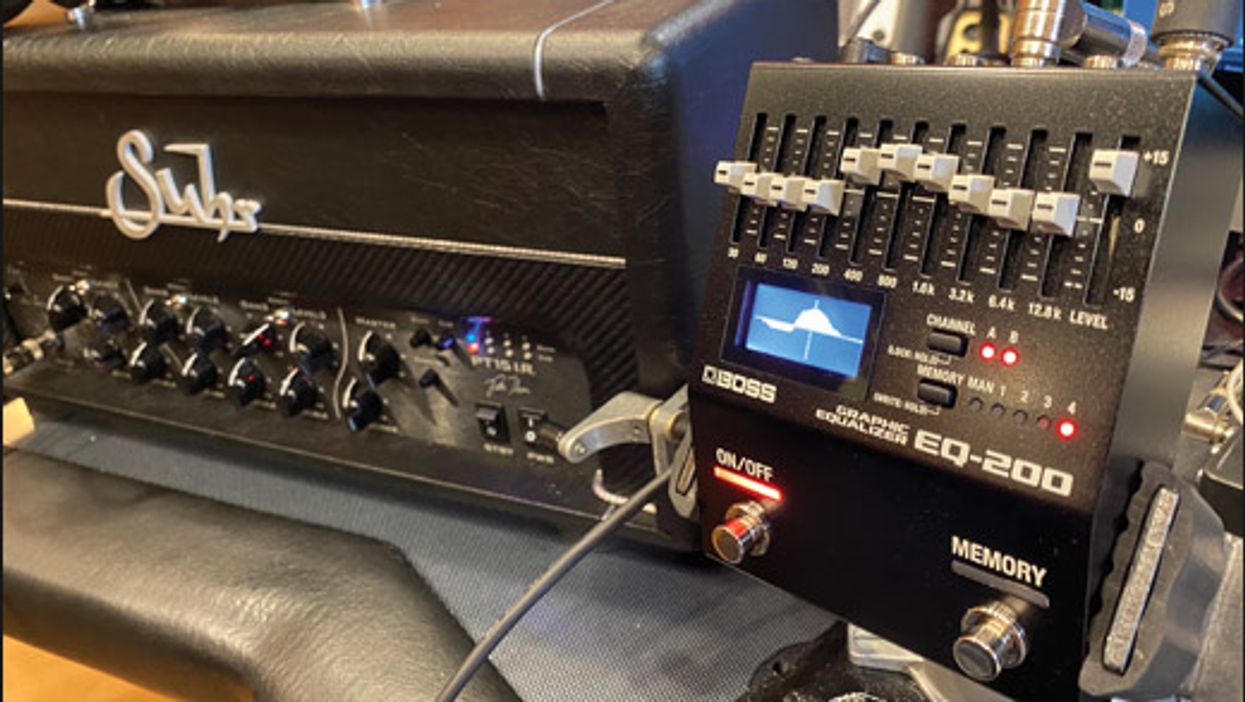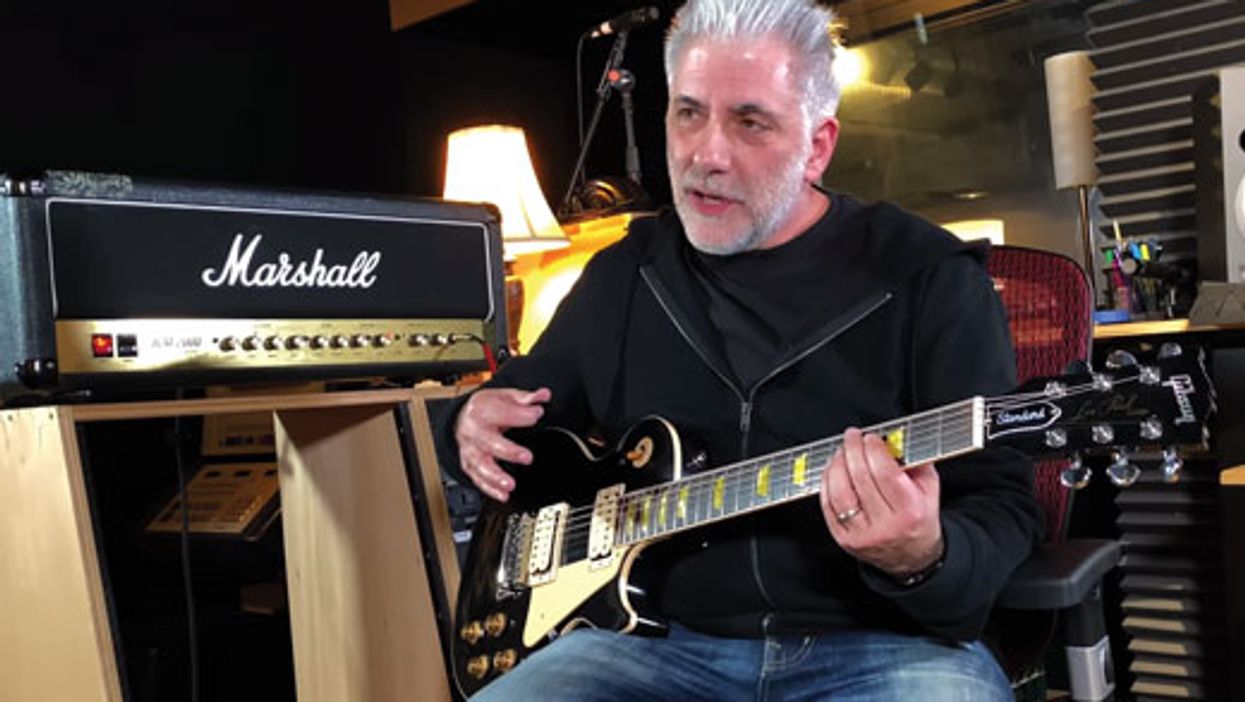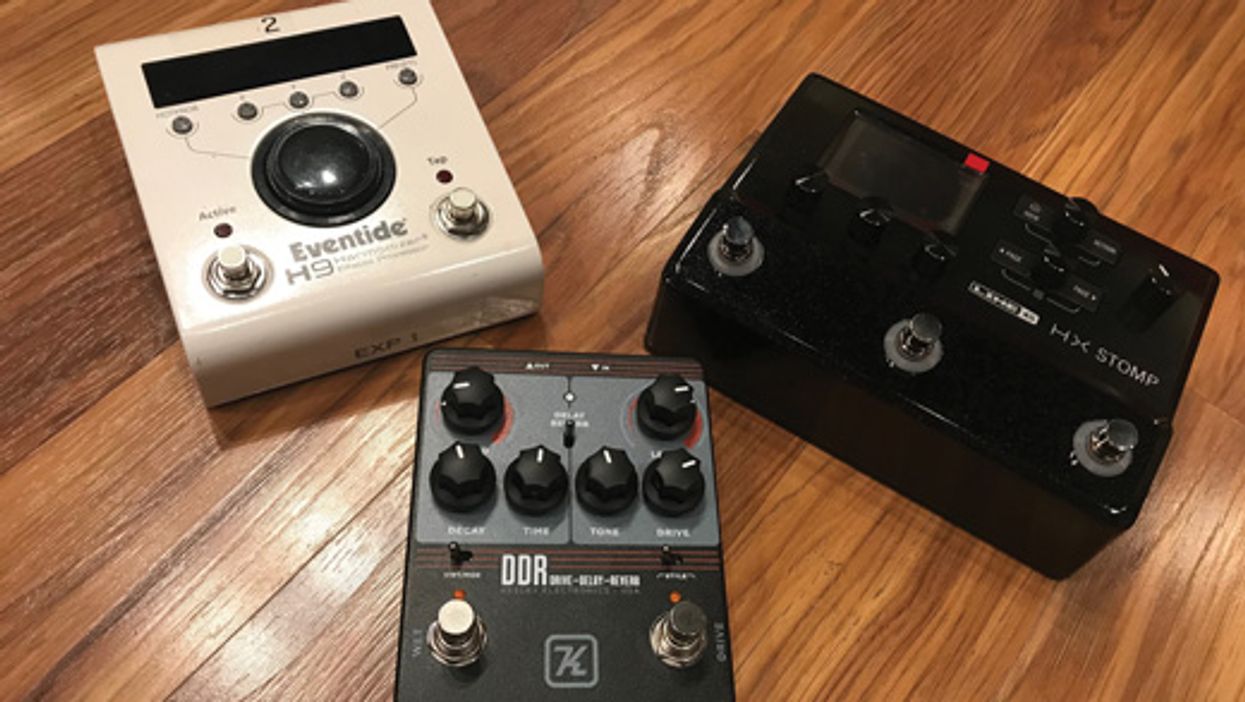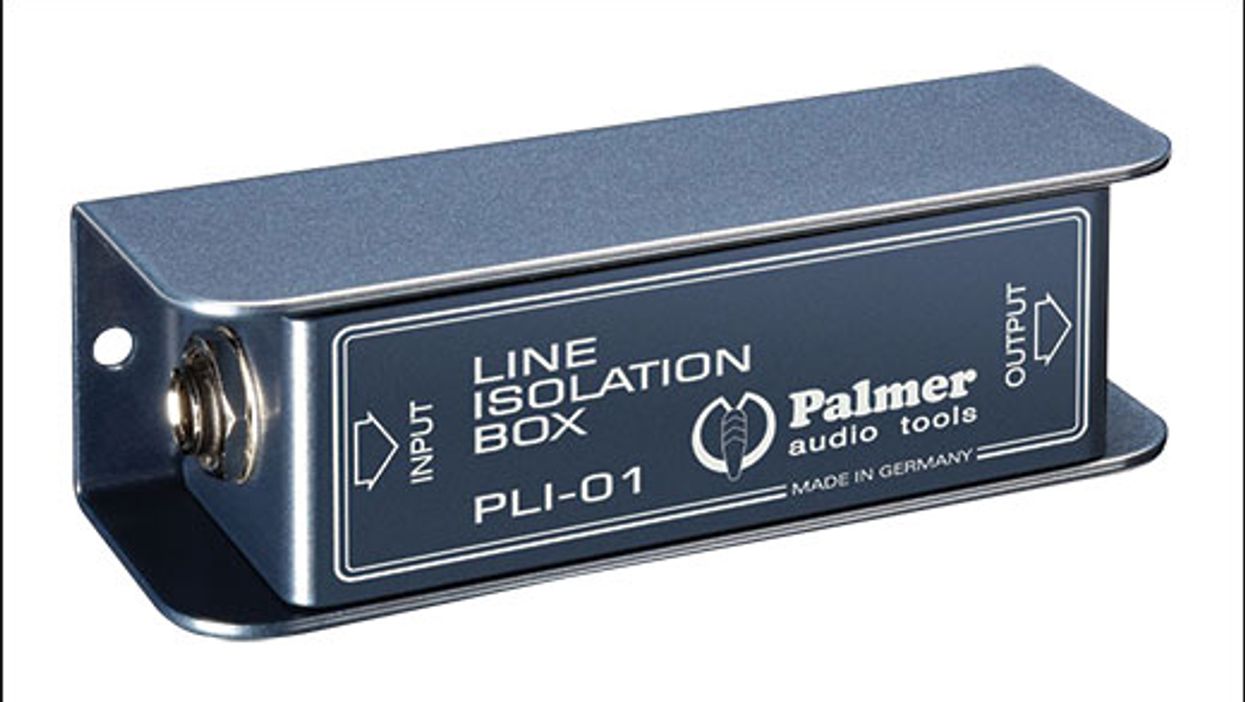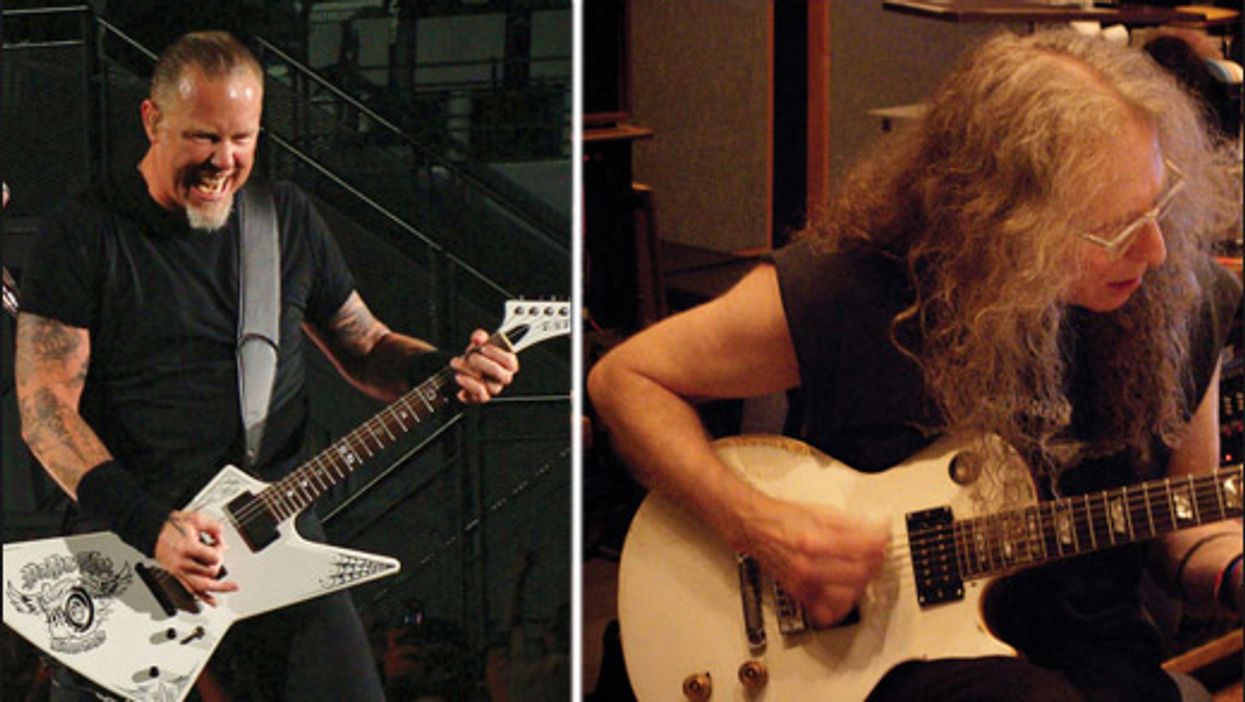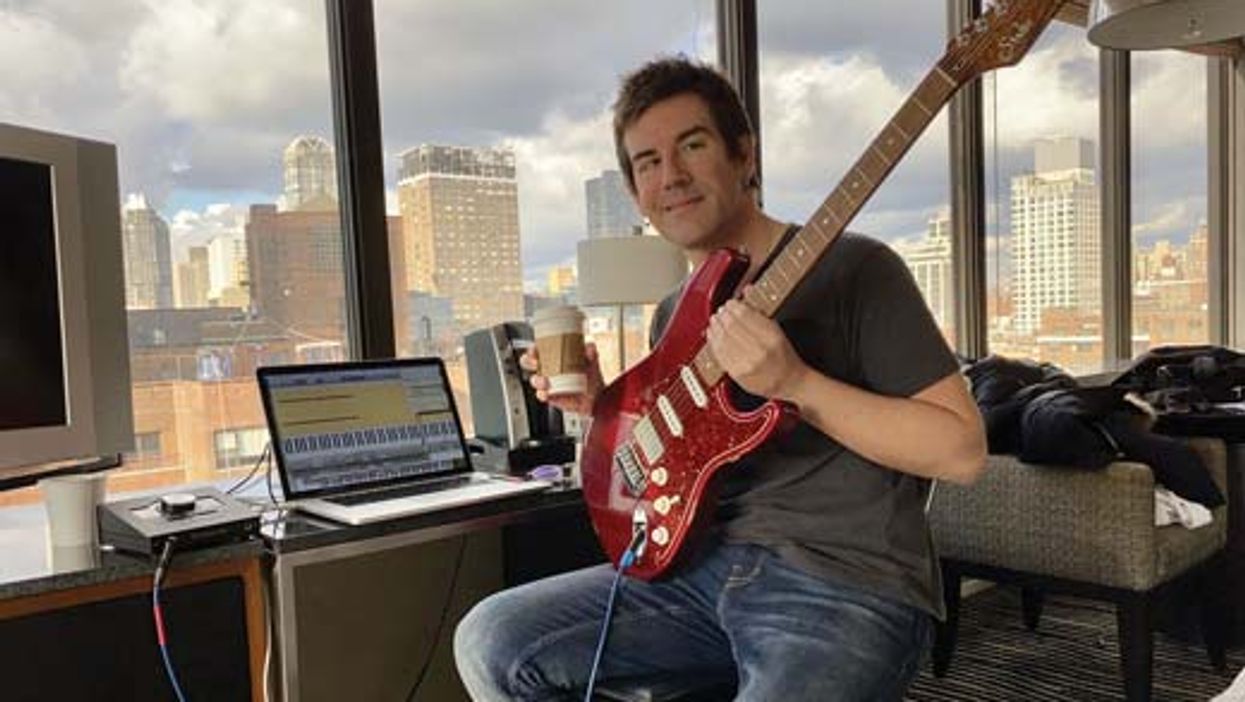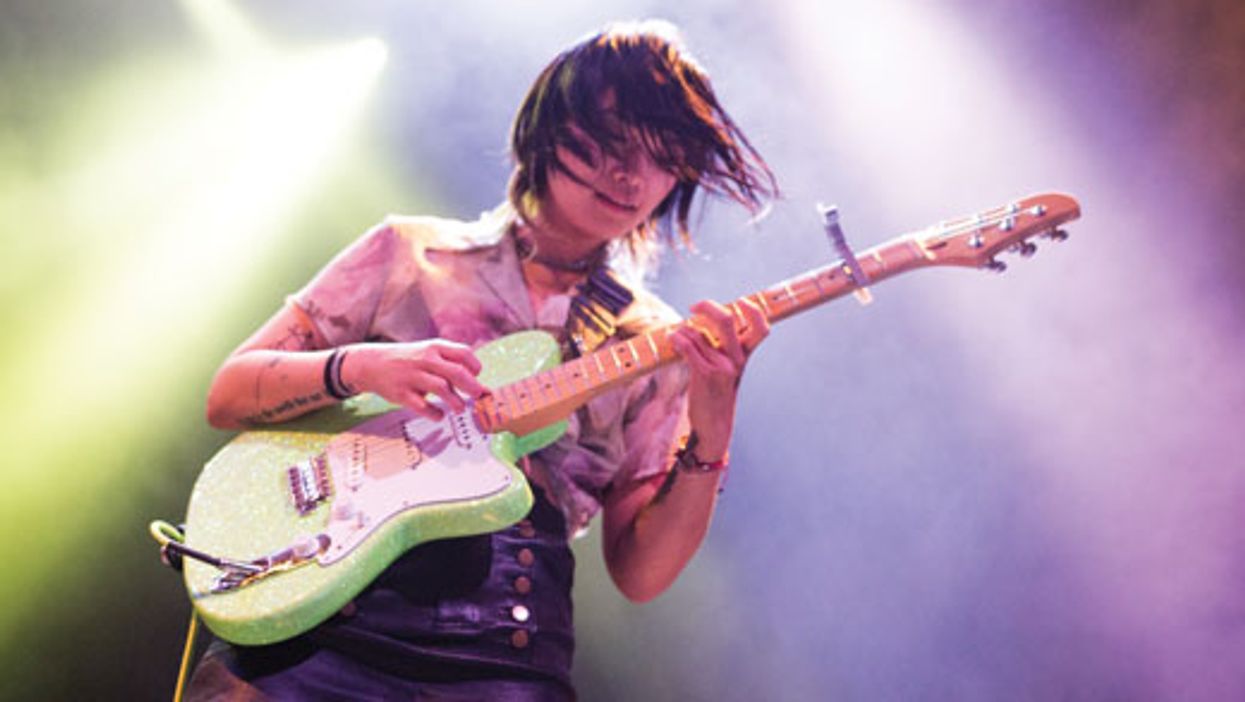Someone recently posted one of my pedal demos in a thread on a guitar forum and stated that he really liked the sound of the pedal in the demo. Another forum member chimed in and said that for some reason, everything I play through usually sounds good. Shortly after, forum member “Squank" replied, “It's a talent. Most gear can be dialed in to sound at least decent."
I agree with Squank, and I appreciate the compliment! We live in a golden age of guitar gear and I'm in the lucky position of getting to play through quite a bit of it. It's rare that I come across an amp, pedal, or other piece of guitar hardware I truly dislike, and I can usually get a decent, useable tone out of most modern equipment. This month, I'll share some of my thoughts on dialing in great tone on amps, pedals, and guitars.
Guitars.
Having all your guitars set up properly is an obvious essential for dialing in good tone. I like low-ish action, and for low action to work, I need to set my guitar necks to have just a bit of relief so the strings won't buzz and rattle, and in turn choke the tone. I'm always checking the neck relief on my guitars and adjusting the truss rod accordingly.
Pickup adjustments are also very important, and I set the height of my pickups by ear. I typically like the bass side of each pickup to be a bit lower than the treble side, so the wound strings don't overpower the treble strings. Also, strings generate more energy and volume in the area closer to the neck, so I typically set neck pickups lower than bridge pickups.
It's best to perform pickup adjustments while playing through a clean amp. You can more accurately hear the true tone and volume of each pickup when the signal isn't being compressed or overdriven by a cranked amp or pedal. Listen to the tone of each pickup position, and try to balance the height of each pickup until the volume remains relatively the same when changing pickup settings.
Amps.
When I first plug into an unfamiliar amp, I'll start by setting all the tone controls to noon, and slowly raise the volume to a comfortable level. If the amp has a master volume, I set it for a good listening level and sweep the gain knob to explore the amp's overdrive capabilities. I then make small tone tweaks by sweeping each pot up and down and listen to the range they work in, and how they affect the sound from different points in front of the amp.
You want enough gain to get great sustain and an aggressive sound if desired, but you don't want to lose the punch, dynamics, and immediacy of a semi-dirty tone.
If an amp has a bright switch—and you decide to use it—be sure to check how your overdrive, fuzz, and distortion controls interact with it when engaged. A bright switch can make many drive pedals sound like a swarm of bees. Tip: Rolling the tone or treble dial way down on your overdrives and distortions can really help in this scenario.
Some amps have a bright cap on the volume pot. The purpose of this cap is to allow your amp to provide a bright, clear tone at lower settings on the volume pot. The more the pot is increased, the less effect the cap has. When the pot is turned all the way up, it should be completely out of the circuit. Like they do with a bright switch, drive pedals can interact with a bright cap and result in less-than-pleasant drive tones. If your amp has a bright cap and you don't like the way it responds to some pedals, or you find it excessively edgy at low volumes, consider having a competent amp tech change the bright-cap value or remove it altogether. This can be a worthwhile and easily reversible mod.
Speaking of overdrive and distortion, I come from the slightly less-is-more school. I recently heard Eddie Van Halen say he likes to crank things until they're ready to explode, and then backs them down just a hair. I dig that way of thinking, and it applies whether you get your distortion from a pedal, a cranked NMV (non-master-volume) amp, or an amp with a more modern preamp-gain circuit.
Excessive distortion homogenizes guitar tone. You want enough gain to get great sustain and an aggressive sound if desired, but you don't want to lose the punch, dynamics, and immediacy of a semi-dirty tone. Malcolm Young is my benchmark—a perfect sonic barometer to go by when talking about incredible rock-guitar tone. His playing proves you don't need a ton of distortion to rock with total authority.
Pedals.
I have a basic rule when it comes to overdrives, distortions, and fuzzes: When I engage them, I want the volume to either stay the same or increase a bit, so I'm "pushing" the amp with the pedal. Because drives compress the sound, they can tend to seem louder overall when you turn them on, but actually they might be reducing the overall peak level. I don't want to diminish the natural output level coming out of my guitar, and I don't want my guitar tone to vanish in the mix when I hit a pedal. As I mentioned earlier, I often run the tone control quite low on drive pedals, which I feel keeps them sounding warm and natural.
Above all, have fun, and remember: Even though I've implied there are rules, there really are no rules.
[Updated 11/2/21]
